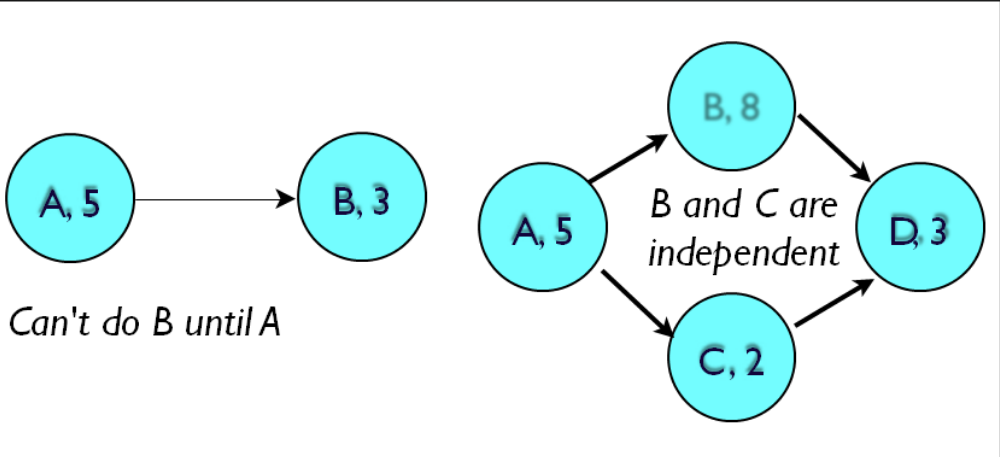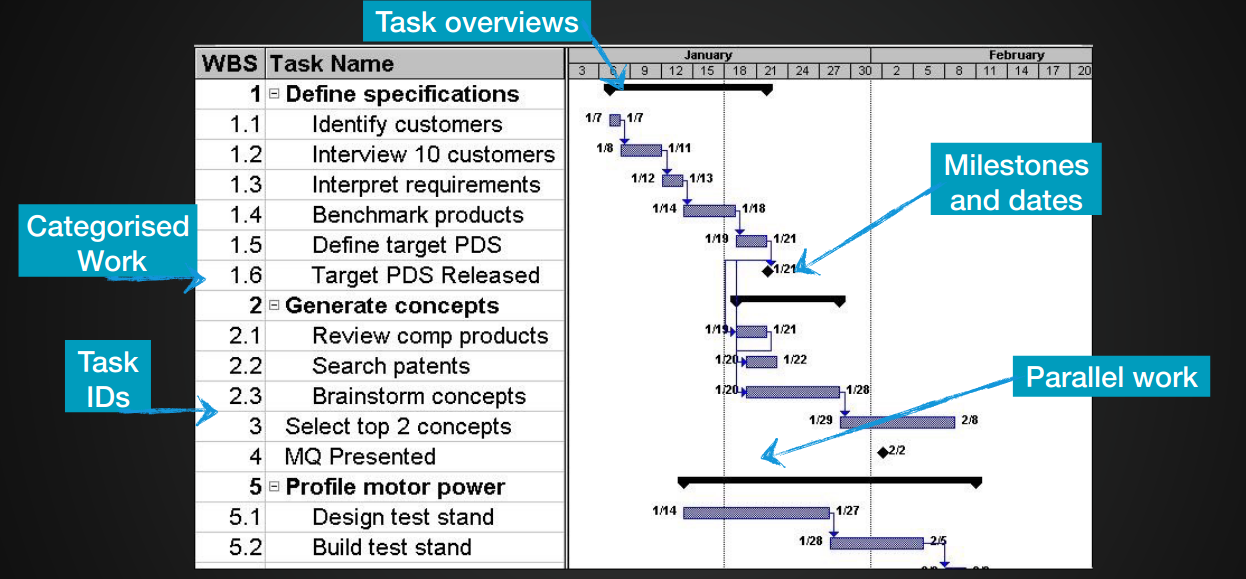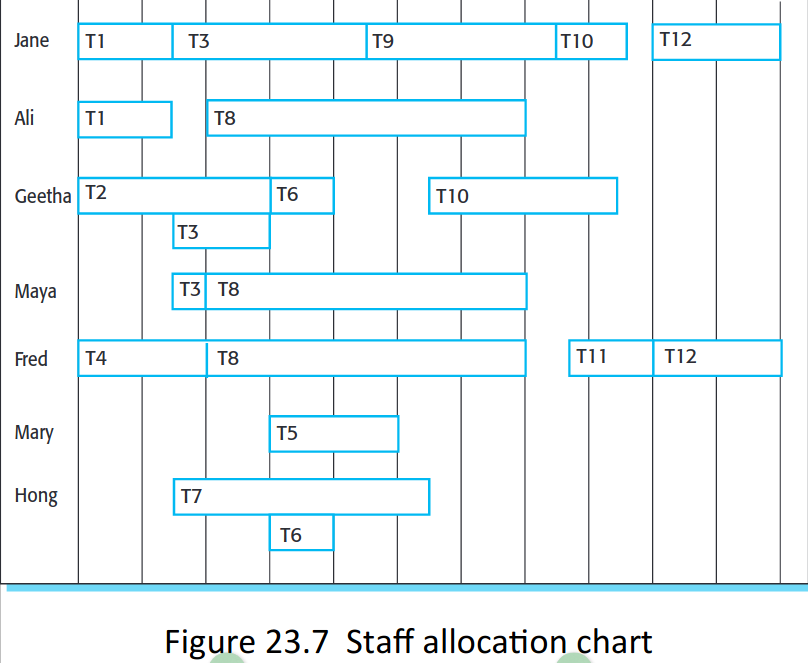22.04.05 - Agile Planning & Project Management
Project Planning
Project Scheduling
- Activities should produce some measurable outcome
- A milestone is the end point of an activity
- Deliverables are results delivered to customers
- If having a meeting with supervisor etc, have something to show them that you have completed
Identifying the tasks
Might take a few days to complete, but requires multiple people
Milestones and outputs
- Every activity/task should produce a tangible output
- Tasks should be a few weeks in size, at least 1, at most 5-6. If longer, should be broken down into person-days of efforts.
- Project needs certain milestones, which produce project deliverable. These might be times when a few activities/tasks all finish
Planning Diagrams
PERT
 A will take 5 days, B will take 3 days. A has to be done before B or C. D requires B and C to be done.
Can be designed in different ways. Simple or detailed, which has extra data (optimistic time, pessimistic time, most likely)
A will take 5 days, B will take 3 days. A has to be done before B or C. D requires B and C to be done.
Can be designed in different ways. Simple or detailed, which has extra data (optimistic time, pessimistic time, most likely)
Critical Path
What the worse case is throughout the entire project
- Identify all the paths through the PERT chart
- Identify the length of time taken for each path
- The longest path (worst case) is the critical path.
- This helps you cost the effort for the worst case, rather than the best case.
Critical path is the bottleneck route, any modification will affect the project duration.
Gantt Chart
 Shows milestones, how many people are required etc.
Shows milestones, how many people are required etc.
Reviewing Progress
- Milestones are times to review progress and the plan
- A plan was an estimate, and sou need to check for slippage.
- If serious, you set into action your risk strategies, and re-plan the project
- If new plan is more expensive, then need to change the tasks or negotiate for more money
Staff Allocation Chart
 What staff are doing and when.
What staff are doing and when.
Agile Planning
- Set deadlines - the output is always 'working' software + something
- Fixed number of people in the team
- Estimate what work can be done in between
- Productivity is then 'daily point score'
Reviewing Progress
- Project reviewing is build right into e.g. Scrum
- The aim of the start of every sprint: plan ahead, overall backlog, targets, reflection
Project Budgets
Overall approaches
- By work that needs doing (then estimating developer time)
- By developer time (and defining how much work to do)
Based on plan/charts
- Analysed the main risks and activities
- First - estimate the min/max time the project will take
- Option 1: Add a contingency estimate (30-50%) extra, risks that didn't plan for
- Option 2: Using a formula
Costing a project > Cost of project
- Experience-based techniques; based on experience of prior similar projects
- Algorithmic cost modelling; mathematical calculations
Algorithmic Cost Modelling

- Are often complex and make people nervous of using them
- Are typically inaccurate
COCOMO
An empirical independent model based on project experience. Created in 1981
Actually pricing the project
- Very hard and relies on lots of experience
- Can estimate how much work a project will take, but that estimate is only as good as the spec of the project
- May add time/costs for projects risks
- May reduce cost for competitiveness
Project Pricing Factors
- Market Opportunity
- Cost estimate uncertainty
- Contractual terms
- Requirements volatility
- Financial health